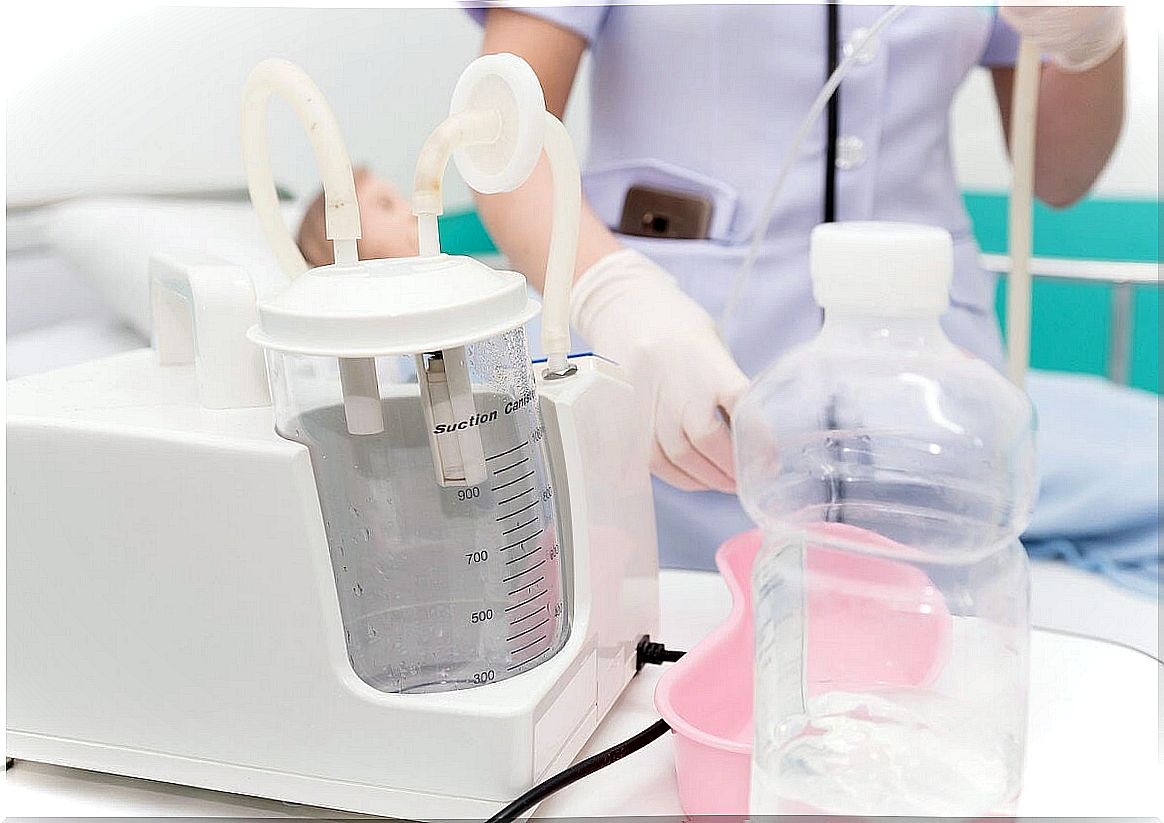Treatment Of Pneumothorax
Everything related to the treatment of pneumothorax is related to the severity and general condition of the affected person. Those with this condition need immediate attention in a specialized center and cannot let time pass.
There are patients at higher risk than others, for example, those who already have a respiratory problem, such as emphysema or asthma. However, there are also traumatic forms that affect anyone regardless of age.
What is pneumothorax and how does it manifest?
A pneumothorax is a collection of air between the cavities of the pleura, which is the outer layer that lines the lungs. The pleura has two constituent sheets or laminae that slide over each other. There is only one virtual space between them.
If air leaks between the two sheets, then they detach from each other and generate no longer a virtual space, but a real one. That is pneumothorax, with the respiratory complications that arise from its existence.
Pain is one of the primary signs of the disease. Sometimes it is generalized, throughout the chest, and other times it is specific in the place where the air accumulated. If it is accompanied by trauma, the clinical location is difficult, since the discomfort may be referred, for example, to a rib that was fractured.
The pressure that the air exerts on the pleura into the lungs hinders the dynamics of inspiration and expiration. Not only does the person have pain, but they also experience dyspnea or lack of ability to breathe.
This leads to symptoms associated with lack of oxygenation, such as bluish discoloration of the skin and mucous membranes. It is a condition called cyanosis . Along with this, to try to compensate, the heart accelerates its beats, that is, a tachycardia occurs. If evolution is not stopped, fainting occurs with loss of consciousness.

Types of pneumothorax
Generally speaking, the treatment of pneumothorax will depend on the cause and the type of presentation. There are two basic ways: traumatic and non-traumatic. In the first, air enters the pleura through an external injury that opens to the environment. In the second one speaks of spontaneity, since it does not mediate a blow.
Traumatic pneumothorax is associated with traffic accidents or rib fractures in sports practice. They are the most common situations that are linked to the pathology.
It does not take giant wounds to produce it. As long as the surface of the pleura is injured and air can enter, there will be an accumulation effect between the membranes that can be stabilized or increased.
Firearm injuries are also causes of pneumothorax, as well as the particular situation of divers who cannot balance internal and external pressures when ascending or descending from the water.
On the other hand, the spontaneous or non-traumatic form occurs in pulmonary patients and in those who do not have a history. This last case is rare, but it has been registered more frequently among male adults of thin build, still without being able to determine the real mechanism that explains it.
In the case of patients with chronic obstructive pulmonary disease (COPD), the explanation is the weakness of the lung tissue and the presence of bullae or air bullae that break from the inside out. For example, in the case of emphysema and asthma.
Pneumothorax treatment options
The type of treatment to be instituted for a pneumothorax will depend on the medical team. In no way can the pathology be approached at home or let time pass. Among the most used options, according to the protocols, we have the ones mentioned below.
Expectant behavior
If the pneumothorax is small and does not make breathing too difficult, you can wait for it to heal on its own. This is done in a controlled hospitalization with the realization of radiographic plates in relative frequency to monitor the evolution of the size of the air accumulation.
Some cases can be handled on an outpatient basis with this methodology, as long as the person meets the basic safety requirements. Until the cure is certified, no physical efforts can be made.
If there is a lack of oxygenation detected with the saturation meter, then the gas will be supplied through an external device. This can also be done on an outpatient basis, at home.
Sewer system
Air from the pleura can be drained with some minimally invasive surgical technique. The most essential way is with a special needle that is inserted through the side of the thorax to give the retained gas an outlet. It is a procedure that can be carried out with local anesthesia.
The next level of complexity, when the person has a major lung disease or pneumothorax, is the insertion of a tube prepared for this purpose. This device enters diagonally to the body axis and drains the air into a water trap that is placed flush with the floor. The residence time of the tube is variable.

Pleurodesis
Pleurodesis as a treatment for pneumothorax is a technique that is reserved for patients with recurrent disorder. If pleural drainage had to be performed several times, it is suggested to seal the laminae so as not to allow space for air to enter in the future.
In basic terms, doing a pleurodesis is to fix the layers of the pleura together so that they stay together. This is achieved by injecting some irritating material, such as talc.
Surgery
Surgical repair in cases of pneumothorax involves large accumulations of air that do not leave room for another approach. It is usually necessary in the face of trauma, such as massive traffic accidents that injure ribs and part of the lung tissue.
Typically, a thoracotomy is performed, that is, an incision in the chest wall to insert a camera device. There the thoracoscopy is specified, which is the internal observation of the situation to define the procedure to be followed.
If there are open wounds, the surgeon can close them with a suture, first draining any air and fluid that may have accumulated. It is not uncommon for a drainage tube to be left in place for a time after completing the surgical procedure to finish removing the retained fluids.
The largest surgery in this field is lobectomy. It consists of the removal of a part of the lung because it cannot be treated in any other way. It is usually the treatment of lung cancers that were expressed with a pneumothorax.
What to do if a pneumothorax is suspected?
If a pneumothorax is suspected, the consultation should be immediate. It is not a pathology that admits delays in its diagnosis and treatment.
The severity of the condition is life-threatening, so the therapeutic options are decided by the medical team that attends in the first instance. If you are a patient with COPD, with all the more reason you should take extreme care and prevention.









